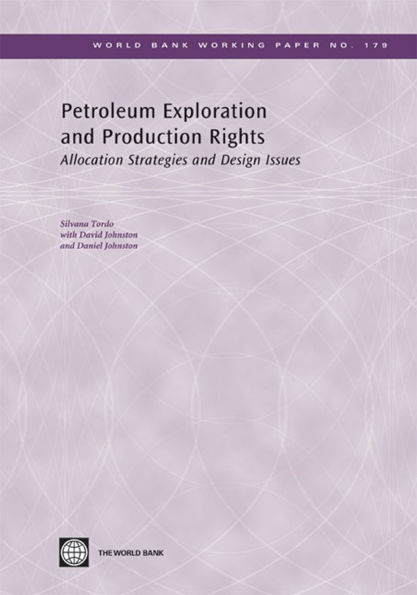Many governments rely on oil companies to efficiently exploit natural resources. Governments have the challenging task of deciding which companies should be awarded exclusive rights to explore, develop, and produce their petroleum resources, and on what conditions such rights should be awarded. This paper analyzes the available evidence on the advantages and disadvantages of various systems used by petroleum-producing countries to allocate petroleum exploration, development, and production rights, and considers the policy implications of each system. The experience of six petroleum-producing countries is presented in detail, and numerous other examples are provided to derive lessons of wider applicability. The paper presents various conclusions for policy makers about the optimal design of allocation systems.
1103561090
Petroleum Exploration and Production Rights: Allocation Strategies and Design Issues
Many governments rely on oil companies to efficiently exploit natural resources. Governments have the challenging task of deciding which companies should be awarded exclusive rights to explore, develop, and produce their petroleum resources, and on what conditions such rights should be awarded. This paper analyzes the available evidence on the advantages and disadvantages of various systems used by petroleum-producing countries to allocate petroleum exploration, development, and production rights, and considers the policy implications of each system. The experience of six petroleum-producing countries is presented in detail, and numerous other examples are provided to derive lessons of wider applicability. The paper presents various conclusions for policy makers about the optimal design of allocation systems.
9.99
In Stock
5
1

Petroleum Exploration and Production Rights: Allocation Strategies and Design Issues
124
Petroleum Exploration and Production Rights: Allocation Strategies and Design Issues
124Related collections and offers
9.99
In Stock

Product Details
| ISBN-13: | 9780821381687 |
|---|---|
| Publisher: | World Bank Publications |
| Publication date: | 01/12/2010 |
| Series: | World Bank Working Papers , #179 |
| Sold by: | INDEPENDENT PUB GROUP - EPUB - EBKS |
| Format: | eBook |
| Pages: | 124 |
| File size: | 416 KB |
From the B&N Reads Blog
